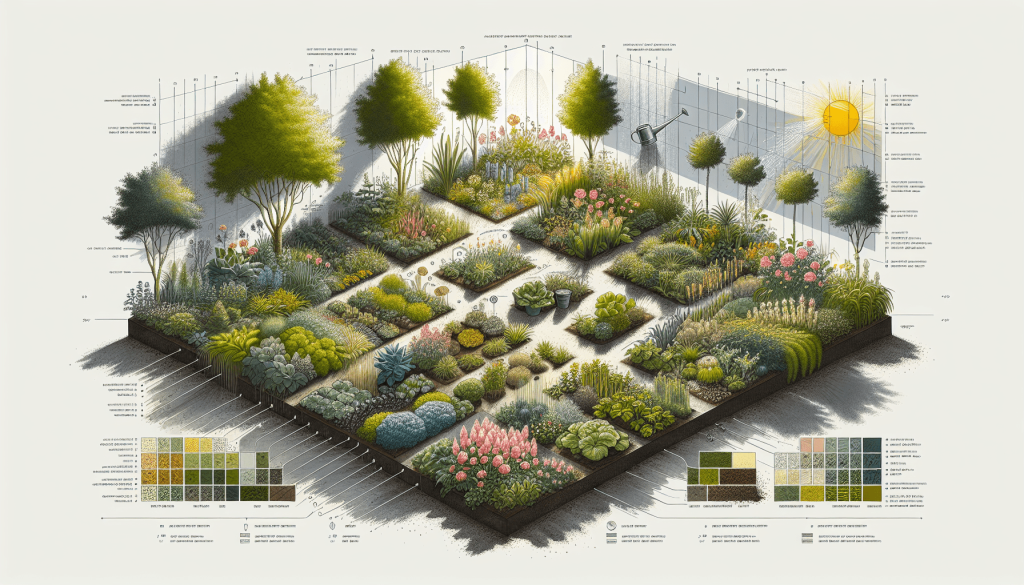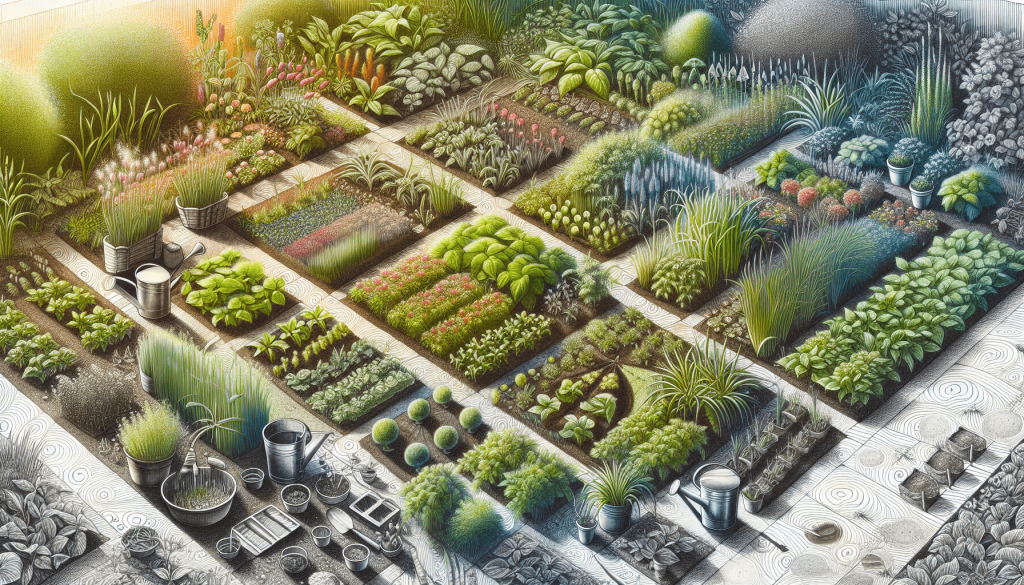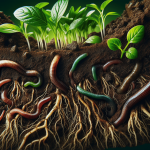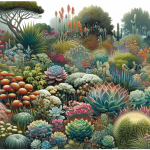This post may contain affiliate links. As an Amazon Associate, we may earn commissions from qualifying purchases.
Understanding how microclimates can impact plant growth in your garden opens up a world of possibilities to create the perfect environment for your plants to thrive. Microclimates, the small-scale climates in specific areas that differ from the general climate around them, can have significant effects on the temperature, humidity, and wind exposure your plants experience. By recognizing and manipulating these unique conditions, you can optimize plant health and yields. Whether it’s by providing shade to heat-sensitive plants, using windbreaks to protect fragile flowers, or situating moisture-loving species in naturally damp spots, there are numerous strategies you can apply. This article dives deep into how microclimates work and offers practical approaches to harnessing or altering these conditions to benefit your garden. Have you ever noticed that some parts of your garden seem to have a mind of their own? Maybe your tomatoes thrive in one corner while strawberries struggle in another. The reason behind this could be microclimates. Understanding how microclimates affect plant growth in a garden, and how to use or modify them, can make all the difference in your gardening success.

What is a Microclimate?
A microclimate is a small, specific climate within a larger area. It can be as small as a few square feet or cover several acres. Factors such as sunlight, shade, wind, soil type, and even human-made structures can all create microclimates.
Examples of Microclimates
- A sunny spot next to a south-facing wall
- A shaded area under a large tree
- A moist area near a water feature
Microclimates can significantly impact the growth and health of your plants. Knowing how to identify and work with these microclimates can transform your gardening game.
How Microclimates Form
Microclimates form due to variations in physical features of a landscape. For instance, a slope facing the sun will have a warmer microclimate compared to a shaded area. Windbreaks like fences or hedges can create shelter, leading to warmer or cooler areas depending on their orientation.
Factors Influencing Microclimates
Sun Exposure
The amount of sunlight a particular area of your garden receives is a key factor. South-facing areas will typically get more sunlight, whereas north-facing areas will get less. This can create microclimates that support different types of plants.
Soil Composition and Moisture
Soil type and moisture levels can vary even within a small garden. Certain areas might have better drainage or more organic matter, creating a unique microclimate.
Wind Patterns
Wind can dry out plants and soil or bring in moisture depending on the wind patterns in your garden. Barriers like walls or hedges can create windbreaks, leading to differing microclimates.
Elevation and Slope
The elevation and slope of your garden can affect temperature and water runoff, further contributing to the formation of microclimates.
Proximity to Structures
Buildings, fences, and other structures can create warmer or cooler areas due to reflected heat or shade. They can also protect plants from harsh winds.
Identifying Microclimates in Your Garden
To fully take advantage of microclimates, you’ll need to identify them in your garden. Here are some methods to help you:
-
Observe Sunlight Patterns: Watch how the sun moves across your garden throughout the day. Note which areas receive full sun, partial shade, or full shade.
-
Test Soil: Different areas might have different soil compositions. Conduct soil tests to determine the pH and nutrient levels.
-
Monitor Temperature: Use a thermometer to measure the temperature in different parts of your garden at various times of the day and year.
-
Check Moisture Levels: Dig into the soil to see how moist or dry it is in different areas. You can also use a soil moisture meter.
-
Wind Patterns: Place wind flags or simply observe which parts of your garden are more exposed to wind.
Effects of Microclimates on Plant Growth
Temperature Variations
Different plants have different temperature requirements. For example, tropical plants might not survive in a cooler microclimate, while temperate plants might struggle in a warmer one.
| Plant Type | Preferred Temperature Range |
|---|---|
| Tropical Plants | 60-90°F (15-32°C) |
| Temperate Plants | 50-70°F (10-21°C) |
| Cool-season Plants | 40-60°F (4-15°C) |
Light and Shade
Some plants need full sun to thrive, while others prefer partial or full shade. By placing each plant in its ideal microclimate, you can maximize its growth potential.
| Plant Type | Ideal Sunlight Exposure |
|---|---|
| Full Sun Plants | 6-8 hours of direct sunlight |
| Partial Shade Plants | 3-6 hours of direct sunlight |
| Full Shade Plants | Less than 3 hours of direct sunlight |
Soil Moisture
Plants also have varying moisture needs. Plants like succulents prefer dry, well-draining soil, while others like ferns thrive in moist, shady environments.
| Plant Type | Ideal Soil Moisture |
|---|---|
| Succulents | Dry |
| Vegetables | Moderately Moist |
| Ferns | Consistently Moist |
Wind Exposure
Wind can be both beneficial and harmful. Some plants are wind-tolerant, while others need shelter to prevent damage. For example, tall plants like sunflowers might need windbreaks to prevent snapping, whereas sturdy herbs might do just fine.

Strategies to Modify or Take Advantage of Microclimates
Plant Selection
Choose plants that suit the particular microclimate of each area in your garden. This is the simplest and most natural approach.
- Warm areas: Opt for heat-loving plants like tomatoes, peppers, and basil.
- Cool areas: Plant cool-season crops like lettuce, spinach, and peas.
- Shaded areas: Choose shade-tolerant plants like hostas, ferns, and impatiens.
Use Structures
Structures like walls, fences, and pergolas can be used to create or modify microclimates. For instance, a south-facing wall can reflect heat and create a warmer spot for heat-loving plants.
Mulching
Mulch can be used to regulate soil temperature and moisture. In cooler microclimates, use dark mulch to absorb heat. For hot areas, use lighter mulch to reflect sunlight and keep the soil cooler.
Irrigation Strategies
Different microclimates within your garden may require different watering methods. Drip irrigation or soaker hoses can provide consistent moisture to specific areas, ensuring that each microclimate gets the right amount of water.
Windbreaks
Planting shrubs, erecting fences, or using other barriers can protect delicate plants from harsh winds. This can create a microclimate more suitable for wind-sensitive plants.
Raised Beds and Terracing
Raised beds and terracing can help manage soil drainage and temperature. They can be particularly useful in areas where the ground soil is poor, allowing you to create ideal conditions for your plants.
Seasonal Adjustments
Make seasonal adjustments to take advantage of temporary microclimates. For example, use row covers to create warmer conditions in spring and fall, or shade cloth to protect plants from the intense summer sun.
Companion Planting
Practicing companion planting can also help modify microclimates. For instance, taller plants can provide shade and wind protection for more delicate plants.
| Benefit | Companion Planting Examples |
|---|---|
| Shade | Sunflowers providing shade for lettuce |
| Wind Protection | Corn providing a windbreak for beans |
| Moisture Retention | Ground covers like clover retaining soil moisture |
Proximity to Water Features
Water features like ponds and fountains can help moderate temperature and humidity in their vicinity. Placing moisture-loving plants near these features can create a microclimate where they thrive.
Practical Examples
Example 1: Creating a Warm Microclimate for Tomatoes
Tomatoes thrive in warm, sunny conditions. To create an ideal microclimate for them:
- Plant them against a south-facing wall to take advantage of reflected heat.
- Use dark mulch around the base to keep the soil warm.
- Consider a windbreak if your garden is exposed.
Example 2: Developing a Cool, Moist Area for Ferns
Ferns love cool, shady, and moist environments. To create a suitable microclimate:
- Plant ferns under trees or shrubs that provide ample shade.
- Use mulch to retain soil moisture.
- Place them near a water feature to maintain humidity.
Example 3: Designing a Wind-protected Garden Bed for Tall Plants
Tall plants like sunflowers and corn can suffer from strong winds. To protect them:
- Plant a row of sturdy shrubs or erect a fence to act as a windbreak.
- Use companion planting to provide additional support and protection.
Conclusion
Understanding how microclimates affect plant growth in a garden can open up a world of possibilities for your gardening endeavors. By observing your garden’s unique microclimates and implementing strategies to modify or take advantage of them, you can create an environment where each plant can thrive. Whether you’re using natural features or adding your own structures, making the most of your garden’s microclimates can lead to healthier plants and a more bountiful harvest. Happy gardening!








